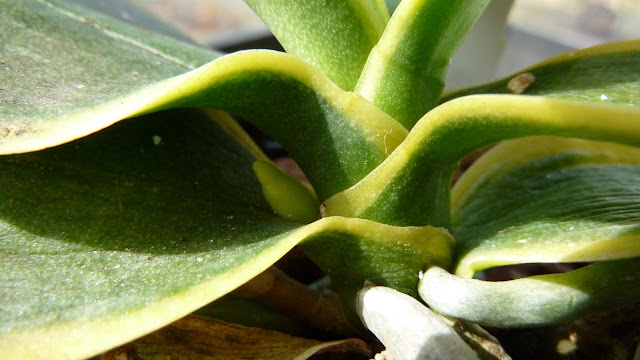I've been doing a million other things and was much more focused on my bromeliads and Nepenthes. All it took was one new Phalaenopsis and we're back in the game. I know, a Phalaenopsis?! The grocery store orchid for the masses? Gets marked down to $1 when it drops it's flowers? Get's thrown in the trash when it's done blooming? How plebian, Ick.
Yeah, but it's Phalaenopsis gigantea. I haven't been this excited about a purchase in a long time. Do yourself a favor and look this one up if you haven't seen one before. I was at my local garden center buying some soil amendments and did my usual browse through the plant section when there she was:
 |
| Large seedling? |
I'm really, really invested in this Phalaenopsis gigantea in particular. I need it to be a monster one day, so whatever happens I cannot kill it. I even bought some larger clear pots to repot this guy out of moss. It's a slow grower, but has definitely grown between the times these pictures were taken.
That set off a slight binge in buying some species and higher end hybrid Phalaenopsis. I don't regret it. My cheap hybrid mini-Phals bloom every winter. My Phal 'Purple Martin', (a violacea hybrid) blooms on and off, all summer, every summer, since I bought it.
 |
| New Phal species from a variety of sources |
 |
| That's a spike. And yeah that's dust/dirt/debris on slightly dehydrated leaves. |
 |
| Spikes in various stages of growth |
So here's to Phalaenopsis. The generic, cheap first orchid many of us killed. For me, the majority of my 2016 orchid purchases. The orchids that are the nicest to me despite me neglecting them for nearly a year, so it appears I do owe them.
Thanks to that Phal. gigantea in particular for renewing my interest in orchids. Does a new purchase ever do that for you all as well?



















































